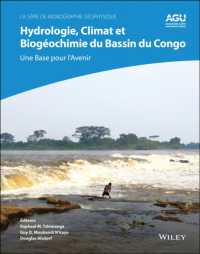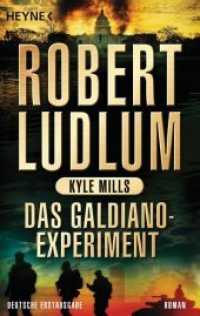Full Description
Although scholars in the environmental humanities have been exploring the dichotomy between "wild" and "built" environments for several years, few have focused on the field of disability studies, a discipline that enlists the contingency between environments and bodies as a foundation of its scholarship. On the other hand, scholars in disability studies have demonstrated the ways in which the built environment privileges some bodies and minds over others, yet they have rarely examined the ways in which toxic environments engender chronic illness and disability or how environmental illnesses disrupt dominant paradigms for scrutinizing "disability."
Designed as a reader for undergraduate and graduate courses, Disability Studies and the Environmental Humanities employs interdisciplinary perspectives to examine such issues as slow violence, imperialism, race, toxicity, eco-sickness, the body in environmental justice, ableism, and other topics. With a historical scope spanning the seventeenth century to the present, this collection not only presents the foundational documents informing this intersection of fields but also showcases the most current work, making it an indispensable reference.
Contents
Foreword by Stacy Alaimo
Introduction by Sarah Jaquette Ray and Jay Sibara
Part 1. Foundations
1. Risking Bodies in the Wild: The "Corporeal Unconscious" of American Adventure Culture
Sarah Jaquette Ray
2. Bringing Together Feminist Disability Studies and Environmental Justice
Valerie Ann Johnson
3. Lead's Racial Matters
Mel Y. Chen
4. Defining Eco-ability: Social Justice and the Intersectionality of Disability, Nonhuman Animals, and Ecology
Anthony J. Nocella II
5. The Ecosomatic Paradigm in Literature: Merging Disability Studies and Ecocriticism
Matthew J. C. Cella
6. Bodies of Nature: The Environmental Politics of Disability
Alison Kafer
7. Notes on Natural Worlds, Disabled Bodies, and a Politics of Cure
Eli Clare
Part 2. New Essays
Section 1: Corporeal Legacies of U.S. Nation-Building
8. Blind Indians: KÁteri TekakwÍ:tha and Joseph Amos's Visions of Indigenous Resurgence 000
Siobhan Senier
9. Prosthetic Ecologies: (Re)Membering Disability and Rehabilitating Laos's "Secret War"
Cathy J. Schlund-Vials
10. Reification, Biomedicine, and Bombs: Women's Politicization in Vieques's Social Movement
VÍctor M. Torres-VÉlez
11. War Contaminants and Environmental Justice: The Case of Congenital Heart Defects in Iraq
Julie Sadler
Section 2: (Re)Producing Toxicity
12. Toxic Pregnancies: Speculative Futures, Disabling Environments, and Neoliberal Biocapital
Kelly Fritsch
13. "That Night": Seeing Bhopal through the Lens of Disability and Environmental Justice Studies
Anita Mannur
Section 3: Food Justice
14. Disabling Justice? The Exclusion of People with Disabilities from the Food Justice Movement
Natasha Simpson
15. Cripping Sustainability, Realizing Food Justice
Kim Q. Hall
Section 4: Curing Crips? Narratives of Health and Space
16. The Invalid Sea: Disability Studies and Environmental Justice History
Traci Brynne Voyles
17. La Tierra Pica/The Soil Bites: Hazardous Environments and the Degeneration of Bracero Health, 1942-1964
Mary E. Mendoza
18. Cripping East Los Angeles: Enabling Environmental Justice in Helena MarÍa Viramontes's Their Dogs Came with Them
Jina B. Kim
19. Neurological Diversity and Environmental (In)Justice: The Ecological Other in Popular and Journalist Representations of Autism
Sarah Gibbons
Section 5: Interspecies and Interage Identifications
20. Precarity and Cross-Species Identification: Autism, the Critique of Normative Cognition, and Nonspeciesism
David T. Mitchell and Sharon L. Snyder
21. Autism and Environmental Identity: Environmental Justice and the Chains of Empathy
Robert Melchior Figueroa
22. Moving Together Side by Side: Human-Animal Comparisons in Picture Books
Elizabeth A. Wheeler
Source Acknowledgments
Contributors
Index








